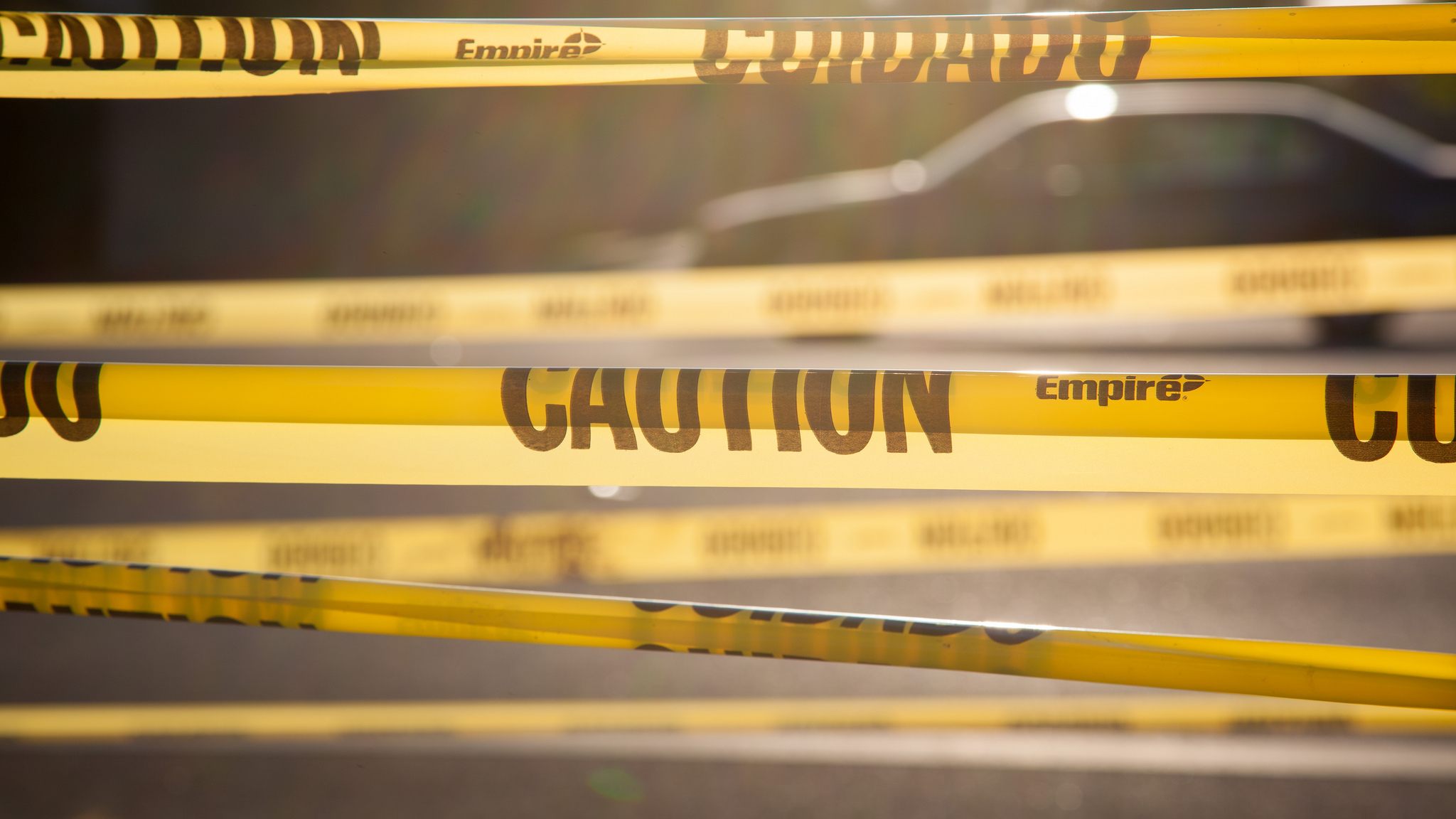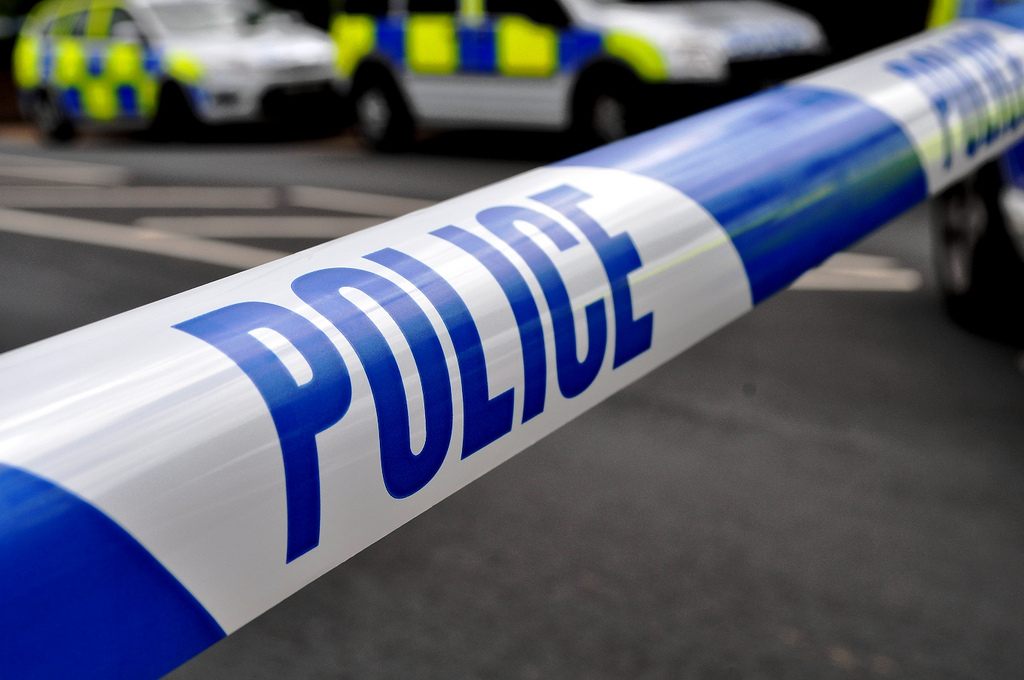The Rise of Police Tape, And Why We Ignore Warning Signs
From cigarette packaging to wet-floor cautions, warnings have become pervasive.

Where do warning signs come from, and do they work? (Photo: Robert Couse-Baker/CC BY 2.0)
A version of this post originally appeared on the Tedium newsletter.
On a daily basis, we’re surrounded by warning signs of varying shapes, sizes, and importance.
These signs, more times than not, are often warning us about things we shouldn’t do, rather than things we should. And due to their ubiquitousness, we often don’t take them nearly as seriously as we maybe should.
Indeed, from jaywalking to smoking, history is replete with examples of humans flouting warnings that, in the most extreme cases, can save their lives. That suggests that, no matter the consequences, even the most creative warnings may not work anyway.
Let’s start with a staple of Halloween, rock concerts, and CSI: police tape.
Once relegated to crime scenes, the yellow-and-black plastic that tells people not to enter a certain area has become something of a pop-culture icon, quietly showing up on the bedrooms of rebellious teenagers and on guitar straps for decades.
Strangely, though, finding out where it came from is really freaking hard. Even with a lot of deep Internet digging, seemingly just one reputable source on the matter exists: The Miami Herald, which wrote about it in 1998. In his piece on the subject, Geoffrey Tomb describes the way that tape has become a mainstay at rock concerts and road repairs, also becoming so popular in crime-heavy Miami that officials there began using a bilingual version.
What inspired Tomb to write about this topic? A massive crime scene, of course.
“So much yellow tape was used at a police shooting in Miami last week that all four corners of an intersection of two city streets were roped off by multiple lines, making it look like a boxing ring,” Tomb wrote in his story. “Yellow tape blocked traffic on streets nine blocks away from the shooting scene.”

Police tape in the UK. (Photo: Ray Forster/CC BY-ND 2.0)
But when was police tape actually invented? Tomb dates the invention to 1960s, crediting a California company called Harris Industries, which produces a variety of plastic warning tapes for purposes far beyond crime scenes, following the color codes recommended by federal standards.
A broader question is whether the tape actually works, which can possibly only be understood after the fact.
“Even if a warning is perceived and comprehended, it will not be effective unless it induces people to behave safely,” wrote James M. Miller and Mark Lehto, two engineers who, in 1986, literally wrote the book on the effectiveness of warnings. (That book, entitled Warnings: Fundamentals, Design and Evaluation Methodologies, Vol. 1, is a rare item these days, selling on Amazon for nearly $600.)
Others have also pointed out, though, that warnings are often only noticed by the people who need them the least.
Last year, for example, two Swedish artists created a warning sign that alerted drivers to people walking while texting.
“One morning when I walked to work I almost got run over by a car because I was staring at my stupid smartphone,” Jacob Sempler told Tech Insider last year. “I looked around, and realized that I wasn’t the only one.
“The thing is though,” Sempler added, “that the people who really need to see this sign, are most likely just gonna pass it with their eyes glued to their screens.”.
That’s a point that Mark Lehto would probably appreciate. Lehto is a longtime faculty member at Purdue University with a deep interest in way that humans interact with information given to them.
And, as it turns out, humans don’t necessarily handle this information very well. In 1995, Lehto organized a study in which a number of subjects were asked to complete a task using a foul-smelling glue. Despite the fact that the label clearly recommended that people ventilate the room before using the glue, only one of the 54 subjects did just that.
“This study suggests that if someone’s main goal is to complete a task, the benefits he perceives in finishing may outweigh the risks of skipping a safety step,” Lehto said in 1997. “If you want people to behave more safely, you need something more dramatic than a warning label.”
Basic human nature might also explain the increasing diversity of warnings in circulation today, from cigarette packaging to the common wet-floor sign, as companies get more creative: perhaps in hopes of better compliance, or at least elegance.

A wet floor sign…in a urinal. (Photo: Leonard J Matthews/ CC BY-ND 2.0)
Rubbermaid sells a lot of wet floor signs, for example, but few rise up to the wood-and-metallic level of the company’s Executive Multi-Lingual Wooden Caution Sign, which looks like it could be a trophy.
Rubbermaid is far from the only company looking to stand out in the world of wet-floor signage, of course. Banana Products, for one, creates variations that look like … wait for it … bananas.

A “Banana Cone” wet floor sign. (Photo: Courtesy Banana Products)
Another firm offers The Hurricone, a device that combines a wet-floor warning cone with a mechanism for drying floors, a joining of technology and helpfulness that any fan of hand dryers is bound to love.
What’s next? Maybe one with a touchscreen.
Perhaps the pervasiveness of warnings was best summed up in 1971, when Five Man Electrical Band’s hit “Signs” became a gold record.
“Sign, sign, everywhere a sign,” the song’s chorus goes, “blockin’ out the scenery, breakin’ my mind.”
A version of this post originally appeared on Tedium, a twice-weekly newsletter that hunts for the end of the long tail.









Follow us on Twitter to get the latest on the world's hidden wonders.
Like us on Facebook to get the latest on the world's hidden wonders.
Follow us on Twitter Like us on Facebook